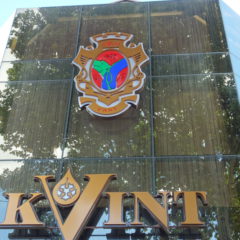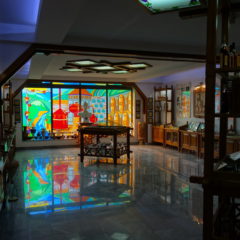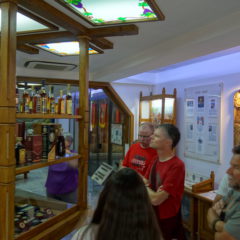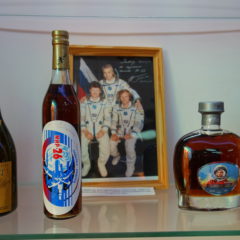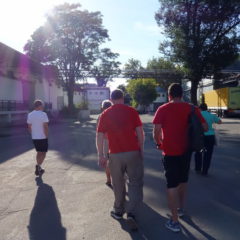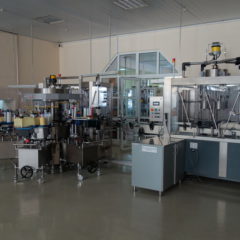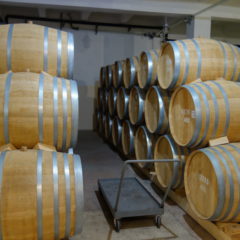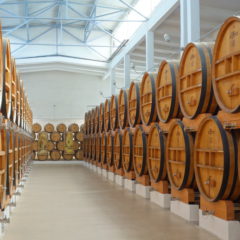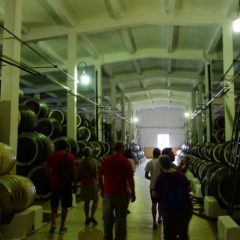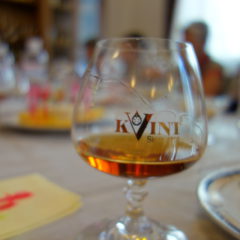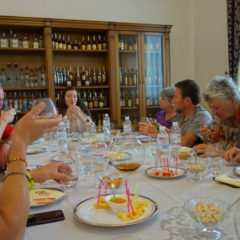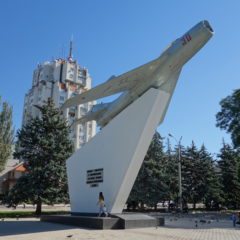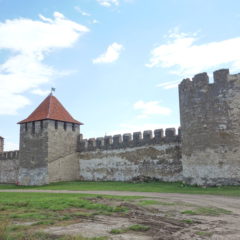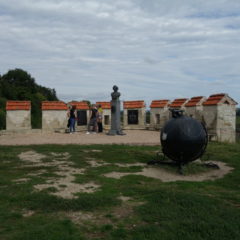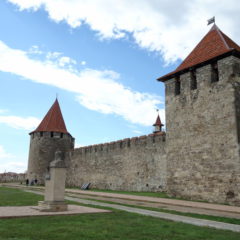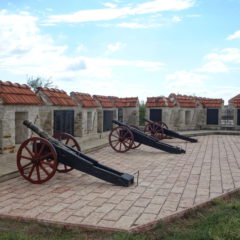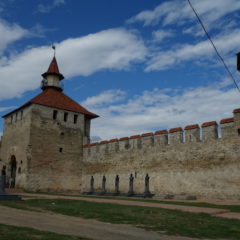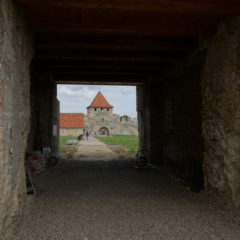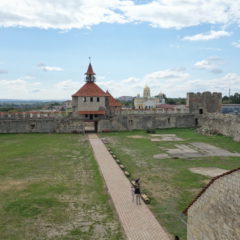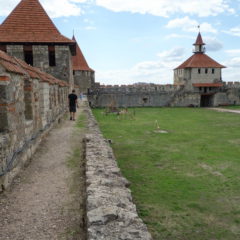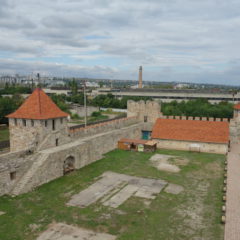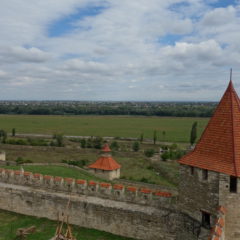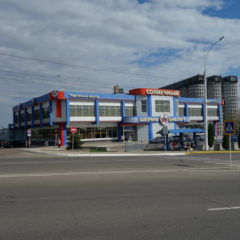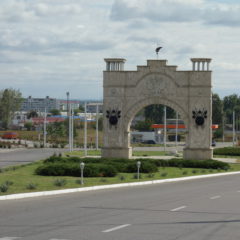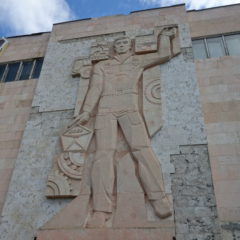This afternoon was dedicated to, what is featured on the five ruble note – i.e. the KVINT divin (brandy) factory.
We got to the factory mid-afternoon and were welcomed by our guide, who directly led us to the plant’s showroom. Here we could get a bit of history of the factory and learned, that during Soviet times KVINT was about as premium as things could get for most, with some of the produce even making it into space and to the MIR space station (despite the fact that alcohol was officially off limits). We even got to see the one bottle, that made it back from space (so – what was wrong with that one – or did they just smuggle too many?).
We also learned about the product range and the best sellers. Key fact here … there is more than brandy … KVINT also does wine, vodka and gin.
From the showroom we continued to the bottling facility and then on to one of the cask stores. Final stop – of course – was in one of the ‘board rooms’ for a brandy tasting – covering five divins starting with a six year old one all the way to the ten year old XO Surprise … certainly an interesting tasting 😉
After the tasting we made it to the KVINT store around the corner and some of the older brandies (i.e. mostly older than anything, we had in the tasting) made it across the counter (in exchange for several of the already mentioned pictures of the KVINT factory). As I was curious about the gin, I got a bottle of that and we ended up having some gin & tonics later that night. The gin was a fairly simple affair, very crisp and clear towards juniper (as it should be) with some side notes of cardamom and none of the playfulness of most gins in Western Europe – for my taste a very straight, delightful and refreshing gin (and at less than 2 USD for a half liter bottle a very affordable one as well).


